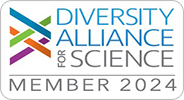Description
• Low flange designed for bar code customization and robotic handing
• Same well geometry for an easy and consistent transition into existing automation and plate readers
• White walled plates enhance luminescent signals and have low background luminescence and fluorescence
• Opaque walls to prevent well-to-well crosstalk
• Optically clear flat well bottom permits direct microscopic viewing
• Can be used for both top and bottom reading instruments
• Recommended working volume of up to 20 to 80 µL
• Flat bottoms with 112 µL total volume
• Individual alphanumeric codes for well identification
• Conforms to standard microplate footprint and dimensions
978-29023: Not treated (or medium binding) polystyrene surface is hydrophobic in nature and binds biomolecules through passive interactions. Is suitable primarily for the immobilization of large molecules, such as antibodies, that have large hydrophobic regions that can interact with the surface. Untreated microplates have a binding capacity of approximately 100 to 200 ng IgG/cm2
978-29026: TC-treated for optimal cell attachment. Sterilized by gamma radiation and certified nonpyrogenic.
978-29029: Nonbinding (NBS™) surface is a Corning proprietary treatment technology used on polystyrene microplates to create a nonionic hydrophilic surface (polyethylene oxide-like) that minimizes molecular interactions. Ideal for reducing protein and nucleic acid binding at low concentrations, and increasing assay signal to noise.
978-29035: Poly-D-lysine coated for enhanced cell attachment. Sterile (aseptic assembly) and certified nonpyrogenic.
†U.S. and Canada Sales Only
Image(s) are representative of the product group and not necessarily the individual product.


